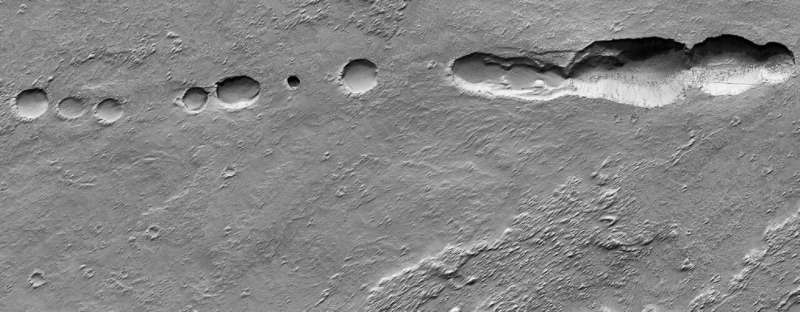This article has been reviewed according to Science X's editorial process and policies. Editors have highlighted the following attributes while ensuring the content's credibility:
fact-checked
peer-reviewed publication
proofread
Researchers develop AI method for mapping planets

Creating geological maps of planetary surfaces such as those on Mars is a complex process. From data collection and analysis to publication in different formats, the production of maps is based on a time-consuming, multi-step process.
Deep learning techniques, which use artificial neural networks to analyze data sets, can significantly improve the production process, as broadly shown in both scientific literature and applications. However, until now, open-source, ready-to-use, and highly customizable toolsets for planetary mapping were not available.
"We were interested in designing a simple, out-of-the-box tool that can be customized and used by many," said Giacomo Nodjoumi. The Ph.D. candidate in the research group of Angelo Rossi, Professor of Earth and Planetary Science at Constructor University, was key to developing "DeepLandforms." The program is open access and available for further optimization, and showcases an inexpensive, fast, and simple approach to mapping planets in outer space.
The scientists demonstrated the results that can be achieved with the help of the software for planetary mapping with a specific landform on Mars, which resembles lava tubes on Earth. Geological maps are an important tool in planetary exploration, because they also serve as a basis for possible explorations by robots or humans.
"DeepLandforms: A Deep Learning Computer Vision toolset applied to a prime use case for mapping planetary skylights" is published in the journal Earth and Space Science.
More information: Giacomo Nodjoumi et al, DeepLandforms: A Deep Learning Computer Vision Toolset Applied to a Prime Use Case for Mapping Planetary Skylights, Earth and Space Science (2022). DOI: 10.1029/2022EA002278
Journal information: Earth and Space Science
Provided by Jacobs University Bremen gGmbH





















